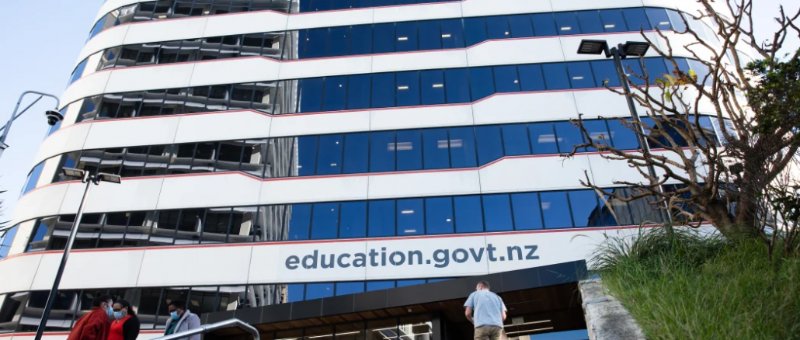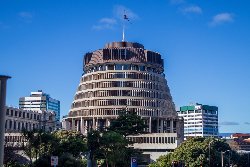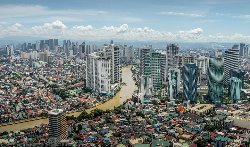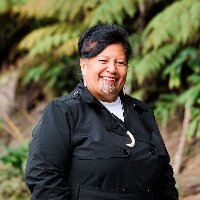November 2017 eBulletin of Living Streets
November 2017 eBulletin of Living Streets Aotearoa.
Living
Streets Aotearoa congratulates our new government which
promises to be responsive to the needs of walking and
pedestrians. We are yet to see the details of how this will
manifest and address our four point plan:
-
funding for walking through a National Land
Transport Plan FAR (funding assistance rate) - promising
with news of active neighbourhood work but details yet to be
revealed how this will apply to
pedestrians
- standards for pedestrian
facilities - no news yet
- slower speeds
around schools and shopping areas - seems
likely
- focus on children walking to
school - also seems likely
Living Streets is concerned at the latest trends in crash statistics which show the injury rate from road crashes is increasing. Statistics NZ serious injury outcome report highlights this and shows the rate for both Maori and children. The Maori rate of injury in motor-vehicle injury is high. Time for a Vision Zero approach for New Zealand.
The Auckland business case for walking in
the central city was presented at Walk21 in Calgary and
received international attention as one of the first
business cases that document the value of walking. Using the
NZTA approach to value the economic impacts of transport
decisions but applied to walking for the first time, the
Auckland report was based on three bits of
analysis:
• Measuring pedestrian delay - the cost of
delay to pedestrians (at pedestrian crossings in
particular),
• The Relationship between pedestrian
connectivity and economic productivity in Auckland city
centre -
• a VURT (valuing urban realm toolkit)
analysis based on the Transport for London model - provides
evidence to invest in the public realm
This report looked
outside traditional transport economics, which values
benefits directly to the transport user (but not usually
pedestrians), and valued the economic benefit of walking
trips within the central city as well as the much smaller
number of walking trips into the centre. We look forward to
future analysis also including health benefits,
accessibility benefits and crash reducation benefits. The
number of pedestrians on Queen Street has doubled since
2012.
We are looking forward to this type of analysis
being used in other parts of the country to value and
justify the significant improvements in pedestrian
infrastructure needed.
The Centre for Sustainable Cities seminar on Sustainable Cities in an Ageing Society by Kay Saville-Smith focused on both housing and travel needs of older people. No surprise then that walking and pedestrian infrastructure plays a key role. We recommend watching the video of the talk.
A new NZ tool to measure accessibility and useability of parks and playgrounds has been developed and used in 41 playgrounds in Porirua. The importance of play for children in particular is well known but many playgrounds do not provide access for all children. This tool helps to identify design issues so that parks can include play for all. Expect more to be heard of this after the NZRA conference this week.
Recent reports have highlighted New Zealands poor performance with increasing greenhouse gas emissions. Road transport has had one of the largest increases in emissions, with a 78% increase since 1990. Transport improvements are one of the easier sectors to address and increased rates of walking will be one of the solutions to help this. And yes our four point plan will help.
The Global Mobility Report is the first-ever study to assess the global performance of the transport sector and the progress made toward four main objectives: universal access, efficiency, safety, and green mobility. According to the report, the world is not on track to achieving sustainable mobility. Apart from being inaccessible to many of the world’s most vulnerable, the transport sector today is plagued by high fossil fuel use, rising greenhouse gas emissions, air and noise pollution, an alarming number of road fatalities, and a reluctance to embrace digitalization.
Gehl Institute Open Public Life Protocol version 1 describes a set of metrics that are important to the understanding of public life—people moving and staying in public space—and aims to establish a common format for the collection and storage of such data. Together with the International Walking Data Standard this will give a good understanding of our public spaces and the impact of developments on them.
Internationally there have been some new developments in pedestrian crossing technologies. Futuristic crossings that can automatically adjust size to the numbers and speed of people crossing are now in development. These crossings are designed with pedestrians in mind not vehicles as has been traditional. Crossings that appear where you want to cross sound like just the ticket.
Talking, walking, seeing fall colours and catching up with friends and family - what's not to like about a visit to North America in September see this Blog by Celia Wade-Brown
In 2015, researchers at the University of Michigan determined that pedestrians are more than three times as likely to be killed when struck by an SUV than when struck by a regular passenger vehicle. The critical design factor is the high, blocky front end, which pushes people below the wheels instead of over the hood. Read more here.
Julie Anne Genter says “here is great writing and observations from one of the founders of Women in Urbanism Auckland, my friend,Emma McInnes. “ Why “Designing Cities for Women” should be a thing.
The World Day of Remembrance for Road Traffic
Victims (WDR) is commemorated on Sunday 19 November. –
to remember the many millions killed and injured on the
world’s roads, together with their families, friends and
many others who are also affected. It is also a Day on which
we thank the emergency services and reflect on the
tremendous burden and cost of this daily continuing disaster
to families, communities and countries, and on ways to halt
it. We suggest that the new Government should implement
Vision Zero.
There will be a Stand for WDR on Sunday 19
at 3:30 in Silo Park Auckland. More events here.


 Gordon Campbell: On The Public Sector Carnage, And Misogyny As Terrorism
Gordon Campbell: On The Public Sector Carnage, And Misogyny As Terrorism National Maori Authority: Maori Authority Warns Government On Fast Track Legislation
National Maori Authority: Maori Authority Warns Government On Fast Track Legislation NZ Government: Comprehensive Partnership The Goal For NZ And The Philippines
NZ Government: Comprehensive Partnership The Goal For NZ And The Philippines DoC: Canterbury Spotted Skink In Serious Trouble
DoC: Canterbury Spotted Skink In Serious Trouble Te Pāti Māori: Oranga Tamariki Cuts Commit Tamariki To State Abuse
Te Pāti Māori: Oranga Tamariki Cuts Commit Tamariki To State Abuse NZCTU: Inflation Data Shows Need For A Plan On Climate And Population
NZCTU: Inflation Data Shows Need For A Plan On Climate And Population Statistics New Zealand: Annual Inflation At 4.0 Percent
Statistics New Zealand: Annual Inflation At 4.0 Percent


